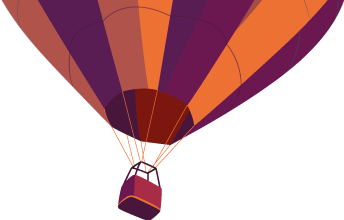-
 Univers
Univers
-
 Ebooks
Ebooks
-
 Livres audio
Livres audio
-
 Presse
Presse
-
 Podcasts
Podcasts
-
 BD
BD
-
 Documents
Documents
-
- Cours
- Révisions
- Ressources pédagogiques
- Sciences de l’éducation
- Manuels scolaires
- Langues
- Travaux de classe
- Annales de BEP
- Etudes supérieures
- Maternelle et primaire
- Fiches de lecture
- Orientation scolaire
- Méthodologie
- Corrigés de devoir
- Annales d’examens et concours
- Annales du bac
- Annales du brevet
- Rapports de stage
La lecture à portée de main
Framework for a service-oriented measurement infrastructure [Elektronische Ressource] / von: Martin Kunz
Tout savoir sur nos offres
Tout savoir sur nos offres

Description
Sujets
Informations
| Publié par | otto-von-guericke-universitat_magdeburg |
| Publié le | 01 janvier 2009 |
| Nombre de lectures | 45 |
| Poids de l'ouvrage | 10 Mo |
Extrait
Framework for a Service‐oriented
Measurement Infrastructure
Dissertation
zur Erlangung des akademischen Grades
Doktoringenieur (Dr.‐Ing.)
angenommen durch die Fakultät für Informatik
der Otto‐von‐Guericke‐Universität Magdeburg
von: Dipl.‐Inform. Martin Kunz
geb. am 10.03.1980 in Burg (b. Magdeburg), Deutschland
Gutachter:
Prof. Dr.‐Ing. habil. Reiner Dumke
Prof. Dr.‐Ing. habil. Georg Paul
Prof. Dr. Juan José Cuadrado‐Gallego
Magdeburg, den 5. Juni 2009
Framework for a Service‐oriented Measurement Infrastructure
ii
Kunz, Martin
Framework for a Service‐oriented
Measurement Infrastructure
Dissertation,
Otto‐von‐Guericke University of Magdeburg,
2009.
Framework for a Service‐oriented Measurement Infrastructure
iii
Acknowledgement
The successful completion of this research work would not have been possible without the
support, guidance, and cooperation of several fellows.
At first, I would like to gratefully acknowledge the supervision of Prof. Dr. Reiner Dumke
during this work. Especially his continued encouragement, invaluable suggestions, and the
valuable comments he has given over the years significantly contributed to this thesis.
I am also very grateful to Prof. Dr. Juan‐José Cuadrado‐Gallego and Prof. Dr. Georg Paul for
their efforts in reviewing and providing their expert opinions on the thesis at hand.
Special thanks go to Dr. René Braungarten, Daniel Reitz, and Niko Zenker, for their friendship,
encouragement, hard questions, and helpful remarks over the years. The joint research,
conference travels, and fruitful discussions resulted in deep friendship and mutual advice.
Furthermore, I am deeply indebted to my former colleagues at the Otto‐von‐Guericke
University of Magdeburg that have provided the environment for sharing their experiences
about the problem issues involved as well as participated in stimulating team exercises
developing solutions to the identified problems. I would specially like to thank my fellows
Prof. Dr. Andreas Schmietendorf, Dr. Fritz Zbrog, Dr. Steffen Mencke, Dr. Dmytro Rud,
Dagmar Dörge, and Ayaaz Farooq for their support and insights.
Moreover, I would like to thank Prof. Dr. Alain Abran and Prof. Dr. Alain April from the ÉTS at
Montréal, Dr. Luigi Buglione from Engineering.IT, Dr. Marek Leszak from AlcatelLucent, Dr.
Evgeni Dimitrov from T‐Systems, Dr. Yoshiki Mitani from NAIST at Tokyo and Harry Sneed
from the University of Regensburg for their cooperation and advice.
I am also thankful to Scientific Toolworks and Telelogic for providing evaluation copies of
their tools which was essential for analyzing them. Additionally, I want to thank the ISBSG for
an evaluation copy of their benchmarking suite and T‐Systems for detailed insights into their
metrics database system.
Finally, my very special thanks belong to my family for their warm support and strength all
these years.
A special thought is devoted to my father for a never‐ending support.
Burg, April 2009
Martin Kunz
Framework for a Service‐oriented Measurement Infrastructure
iv
Abstract
The increasing economic relevance of software measurement for organizations cannot be
neglected. But issues like complexity and missing traceability of measurement processes
constitute the need for direction and measurement tool support.
Unfortunately, the area of software measurement tools is dominated by inflexible,
monolithic, and self‐contained tools. This situation aggravates a process comprehensive
solution and results in n unsatisfying situation regarding corporate measurement programs.
Due to manifold advantages of high‐flexible infrastructures compared to monolithic products
a lot of initiatives propose approaches for the integration of single components (e.g.
services).
Having analyzed the SOA‐capability of existing measurement tools this thesis introduces a
framework for creating a measurement infrastructure by means of a service‐oriented
architecture.
Beyond the presentation of different components to implement the infrastructure the
specific relevance of software measurement databases is addressed by the design of a
service‐oriented measurement database.
Beside the functional characteristics the quality of developed architectures is of substantial
interest for the success of systems integration in the long run. Therefore for a procedure for
quality driven design of service‐oriented architectures has been integrated into the
framework.
Additionally, formal considerations of existing paradigms in comparison to the service‐
oriented approach constitute the reasonability of the presented research topic.
Framework for a Service‐oriented Measurement Infrastructure
v
Table of contents
List of Figures ......................................................................................................................................... viii
List of Tables ............. xi
Table of Abbreviations ........................................................................................................................... xii
1. Introduction .......... 1
1.1. Motivation ..... 1
1.2. Research Question ....................................................................................................................... 3
1.3. Research Methodology .................
-
 Univers
Univers
-
 Ebooks
Ebooks
-
 Livres audio
Livres audio
-
 Presse
Presse
-
 Podcasts
Podcasts
-
 BD
BD
-
 Documents
Documents
-
Jeunesse
-
Littérature
-
Ressources professionnelles
-
Santé et bien-être
-
Savoirs
-
Education
-
Loisirs et hobbies
-
Art, musique et cinéma
-
Actualité et débat de société
-
Jeunesse
-
Littérature
-
Ressources professionnelles
-
Santé et bien-être
-
Savoirs
-
Education
-
Loisirs et hobbies
-
Art, musique et cinéma
-
Actualité et débat de société
-
Actualités
-
Lifestyle
-
Presse jeunesse
-
Presse professionnelle
-
Pratique
-
Presse sportive
-
Presse internationale
-
Culture & Médias
-
Action et Aventures
-
Science-fiction et Fantasy
-
Société
-
Jeunesse
-
Littérature
-
Ressources professionnelles
-
Santé et bien-être
-
Savoirs
-
Education
-
Loisirs et hobbies
-
Art, musique et cinéma
-
Actualité et débat de société
- Cours
- Révisions
- Ressources pédagogiques
- Sciences de l’éducation
- Manuels scolaires
- Langues
- Travaux de classe
- Annales de BEP
- Etudes supérieures
- Maternelle et primaire
- Fiches de lecture
- Orientation scolaire
- Méthodologie
- Corrigés de devoir
- Annales d’examens et concours
- Annales du bac
- Annales du brevet
- Rapports de stage





